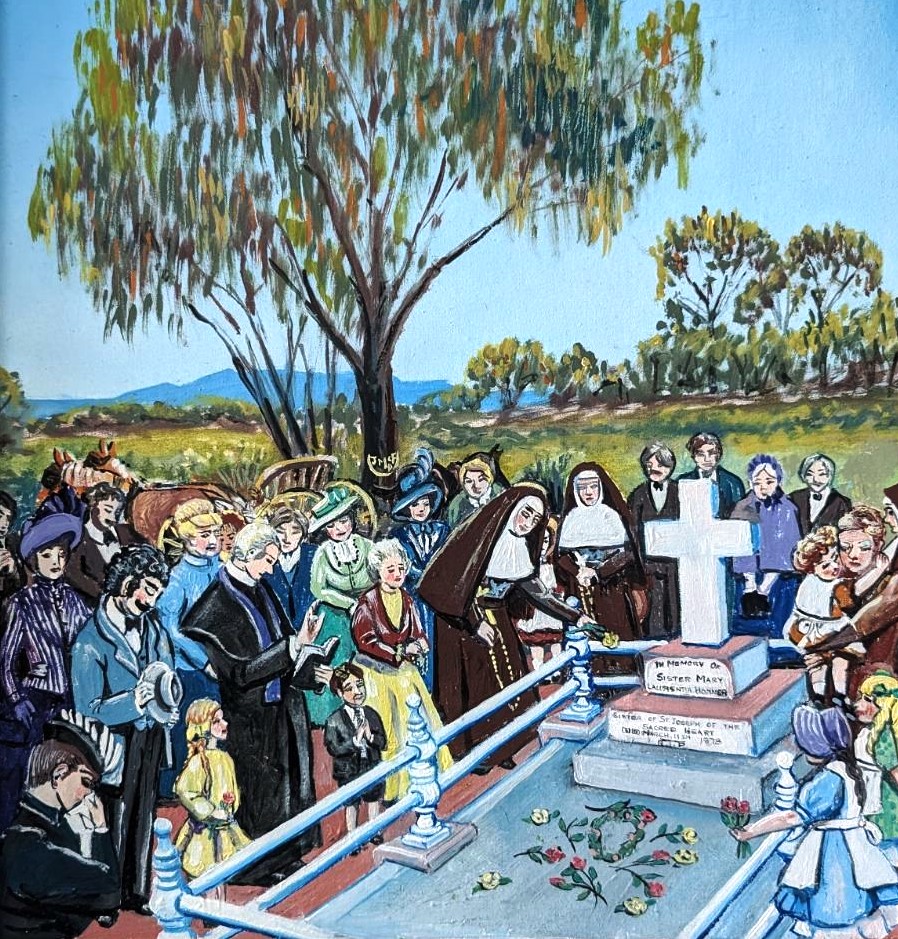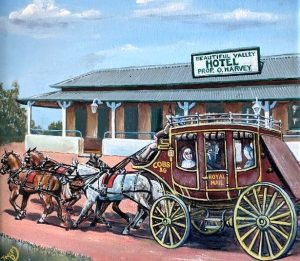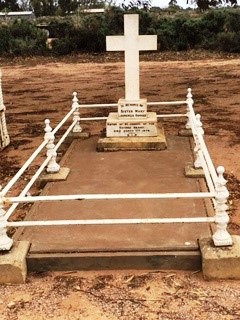
In the Diocese of Port Pirie in South Australia, there’s a beautiful well-kept graveyard, some seven kilometres out of Port Augusta, with the stunning Flinders Ranges as its backdrop. In good times the roses bloom and the kangaroos keep the lawn mowed and the grave-sites company. But on the area’s outer edge are the older graves of early pioneers – no roses or lawn here, just a few Blackbutt Eucalyptus, Weeping Myall and Saltbush surviving in red, sandy Earth.
On one side is a huddle of three graves, the centre on being that of Sister Laurencia Honner who died as a result of a fire on 11 May 1878, aged eighteen years. The local newspaper described her funeral at the time, the long line of buggies snaking out of town to Stirling North. Notably there is no mention of the grieving Sisters of Saint Joseph, her companions in this isolated, treeless town. Nor do they note the presence of Mary MacKillop who had made the arduous journey of some 350 kilometres by Cobb and Co and then buggy to Port Augusta to be with Laurencia before she died. If we were ever unsure about where Mary MacKillop walked, we can be sure her footprints are here at the grave of Laurencia.

But equally, we can follow Mary’s footprints in towns and villages, many long gone, dotted all over the Diocese of Port Pirie. Having arrived by ship, coach, and later, train, Mary would make her way on foot to where the Sisters were living, often carrying her own luggage. Evidence has it that at least 24 different settlements saw her visiting the children’s families and the sick. Then she would go on to visit Sisters living nearby, being driven by horse and buggy and on one known occasion taking the reins herself. No town was too small or too isolated.
When he proclaimed Mary patron of the vast Port Pirie diocese in 2011, Bishop Gregory O’Kelly S. J. wrote:

Why wouldn’t we have Australia’s first acclaimed Saint as our Diocesan Patron?
Helen Duke rsj
Images used with permission.
